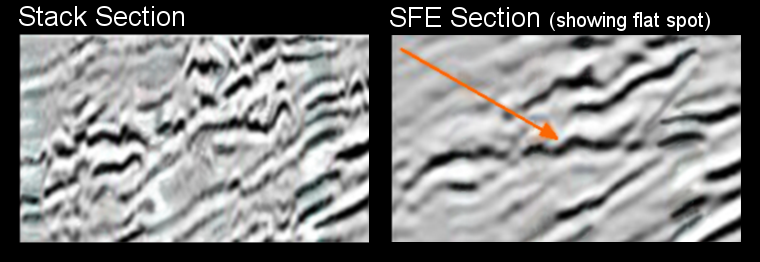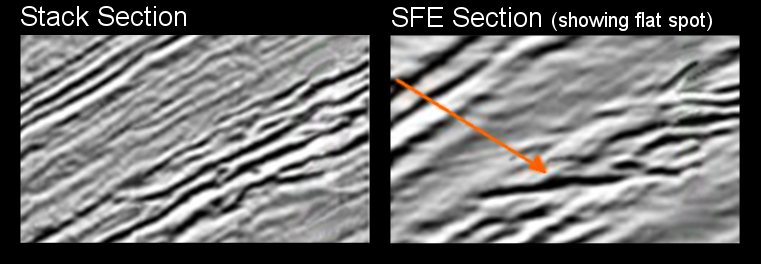A powerful flat-spot utility that enhances the signal of consistent flat events & reduces the “noise” of the channel reflections
Product overview
- Seismic Feature Enhancement (SFE) uses technology proven to reduce risk of drilling dry holes in exploration prospects
- Easily used by exploration geoscientists at their interpretation workstations
- Available as plug-in for Petrel* and OpendTect; also standalone with connections to OpenWorks® and SEGY
- Superior to optical stacking

Product description
Recognising fluid contacts within potential reservoirs is a key risk-reducing factor in exploration prospects. Seismic data occasionally clearly resolves obvious fluid contacts prior to drilling but frequently subtle flat spots are only seen in the data after discovery. Recognising flat spots earlier would clearly enhance the competitive position and reduce risk of dry holes.
The SFE technique enhances the signal of flat events within 3D seismic volumes, utilising stacking of parallel traverses. The method works well to resolve flat spots in channel features EG in turbidite channels. A traverse is interpreted down a likely channel axis and traces are stacked within an aperture. This enhances the signal of consistent flat events and reduces the “noise” of channel reflections. The signal to noise of flat events is improved by the square root of the number of relevant input traces. This is superior to optical stacking where the result can be dominated by a single high amplitude event.

Benefits of SFE
SFE provides a very powerful technique to help recognise flat spots much earlier during the interpretation cycle so reducing the risk of drilling dry holes. SFE seamlessly integrates with existing seismic interpretation platforms.
SFE is available as a plugin-in for Petrel, a plug-in for OpendTect and standalone with data connections to OpenWorks® and SEGY/ASCII.